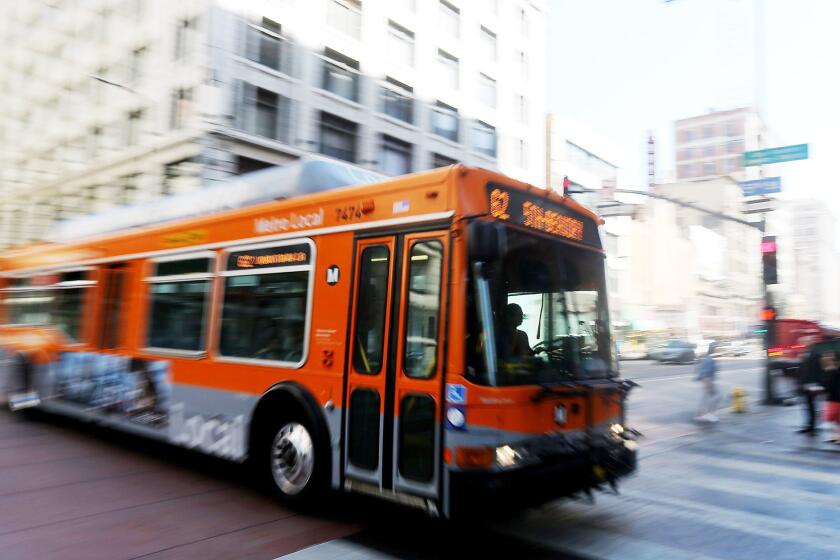Ready to Roll
- Share via
NEWPORT BEACH — When one of the most controversial projects in Orange County history, the San Joaquin Hills Transportation Corridor, opens next week, it will mark the beginning of an era for transportation planners but the end of a long fight for environmentalists.
“A lot of people have been waiting for this,” said Michele Miller, a spokeswoman for the Transportation Corridor Agencies, which built the toll road scheduled to open completely Nov. 21. “It really opens up the doors and gives them another alternative.”
Lida Lenney, a former Laguna Beach mayor who staunchly opposed the project because it cut through Laguna Canyon, has a different view.
“It makes me very sad,” she said of the new tollway. “This is the kind of thing that incites violence in me as a person. I will never travel that road.”
If traffic forecasts are correct, however, many others will.
After the first full year of operation, at least 70,000 vehicles a day are expected to travel the 15-mile road, which roughly parallels the San Diego and Santa Ana freeways, between Laguna Niguel and Newport Beach. They will do that, forecasters say, because the trip will be less than half as long as their present 45- to 90-minute commute, even though the ride will cost 25 cents to $2, depending on where one enters or exits.
The $1.5-billion project, funded largely by bonds, is the cornerstone of three major toll roads totaling 70 miles in South and East County that have been under construction since 1993 and are expected to be completed by 2003. The new road’s first 7-mile segment, from Greenfield Drive in Laguna Niguel to Laguna Canyon Road in Laguna Beach, opened July 24 and carries about 9,800 vehicles a day, according to Miller.
While that is less than the 10,000 to 15,000 vehicles originally projected, she said, the toll road agency is satisfied.
“It’s in the ballpark,” Miller said, adding that traffic on the first half of the new toll road is growing 3% to 5% a week. “The road is definitely performing well. . . . We’re excited about it, and I think that many people in Orange County are excited.”
However, the atmosphere has not always been positive.
Environmentalists chained themselves to bulldozers in 1993. The tactic was to be repeated by dozens of others over the next two years. Eight of the original protesters were cut free by firefighters, arrested and charged with misdemeanor trespassing, eventually agreeing to a settlement under which they performed community service.
Other protests included candlelight vigils, the symbolic covering of portions of the canyon with protective blankets and rallies attended by thousands.
Activists also filed an array of legal challenges to bar the project on the grounds that it would harm some of the communities through which it passed and seriously damage the environment of Laguna Canyon, home to the endangered California gnatcatcher.
In the end, all the protests and legal challenges failed, allowing developers to announce recently that the final stretch of the road would open Nov. 21, in time for the Thanksgiving holiday and more than three months ahead of its original March completion date.
“We did our best,” Lenney said. “I don’t know of anything we could have done that we didn’t do; the bulldozers were just too powerful.”
Elisabeth Brown, another environmentalist opposed to the project, agreed. “It’s a monster,” she said of the soon-to-be-opened road. “It’s as bad as we had imagined.”
Trips during its first three days of operation--until 10 p.m. Nov. 24--will be free, giving commuters a chance to sample the full route from Laguna Niguel to the John Wayne Airport, according to Miller.
“This is kind of a first-time deal for Californians,” she said, “and we want them to get on and see where it takes them.”
The only previous public toll road built in the state during the last 75 years, she said, is her agency’s own Foothill Transportation Corridor, a portion of which first opened in South County in 1993.
“We’re not used to toll roads in this state,” Miller said. “What better way to familiarize people with the new road than to open it for a few days and let them get a better look?”
After Nov. 24, she said, those traveling north on the new segment will pay as they enter, while those traveling south will pay as they exit. On the southernmost section, which has been open since July, the situation is reversed: Drivers going north pay as they exit, while those traveling south pay as they enter.
“The assumption is that most people will travel the full length of the road,” Miller said.
Motorists will be able to pay three ways, she said.
Those in vehicles equipped with electronic transponders will be able to pull into the left lane and have their accounts automatically debited for the amount of the fare. The transponders, which attach to the windshield, can be obtained for free (or for a $30 refundable deposit for those who don’t have a credit card) at the toll agency’s service centers in Laguna Niguel and Irvine.
The devices are the same as those used on Orange County’s other two toll roads, the Foothill Transportation Corridor and the Riverside Freeway Express Lanes, thus allowing their owners access to all three roads.
Motorists on the new toll road will also be able to pay by pulling into the right lane and throwing exact change into collection boxes.
And those without exact change will be able to hand their money to toll collectors at the mainline toll plaza or El Toro Road.
“We wanted to make this a seamless system for commuters,” said Paul Glaab, another spokesman for the toll road agency.
Over the next few day, workers will be putting up entry and exit signs, installing roadside railings and completing highway striping in preparation for the opening.
On Tuesday, they will take media representatives on a tour of Orange County’s newest toll road.
And come Nov. 21, Miller said, drivers will have a more efficient way of traveling between the county’s northern and southern ends.
“We’re very excited,” she said of the commuting time that she believes the new road will save. “We think people are really going to be surprised.”
(BEGIN TEXT OF INFOBOX / INFOGRAPHIC)
Opening an Artery
When the remaining half of the San Joaquin Hills Transportation Corridor opens Nov. 21, north-south commuters will have a 15-mile alternative to the often congested San Diego Freeway. Unlike eastern toll roads, San Joaquin Hills charges are based not on distance driven but rather on which entrances/exits are used. Tolls range from 25 cents to $2 (when passing through the Mainline toll plaza). Here’s a look at the corridor’s path and tolls:
SOUTHBOUND FROM JAMBOREE ROAD
1. MacArthur Boulevard: Free
2. Bison Avenue*: Free
Pay when exiting toll road
3. Bonita Canyon Drive: $0.25
4. Newport Coast Drive: $0.50
5. Mainline**: $2.00
Pay when entering toll road
6. Laguna Canyon Road: $1.00
7. Aliso Creek Road $0.75
8. La Paz Road/Moulton Parkway: $0.50
* Opens after Nov. 21
** No other tolls in either direction
*
NORTHBOUND FROM SAN DIEGO FREEWAY
1. Greenfield Drive: Free
Pay when exiting toll road
2. Moulton Parkway/La Paz Road: $0.50
3. Aliso Creek Road: $0.75
4. El Toro/Laguna Canyon roads: $1.00
5. Mainline**: $2.00
Pay when entering toll road
6. Newport Coast Drive: $0.50
7. Bonita Canyon Drive: $0.25
8. Bison Avenue*: Free
9. MacArthur Boulevard: Free
* Not open till after Nov. 21
** No other tolls in either direction
*
Free ride: Travel along the tollway’s entire length will be free between Nov. 21 and 10 p.m. Nov. 24
Payment method: Cars with transponders (small electronic devices) will be automatically charged. They are available at the agency’s service centers in Laguna Niguel and Irvine. Exact-change boxes will also be available; collectors will work at the Mainline toll plaza and El Toro Road.
Source: Transportation Corridor Agencies
More to Read
Sign up for Essential California
The most important California stories and recommendations in your inbox every morning.
You may occasionally receive promotional content from the Los Angeles Times.










